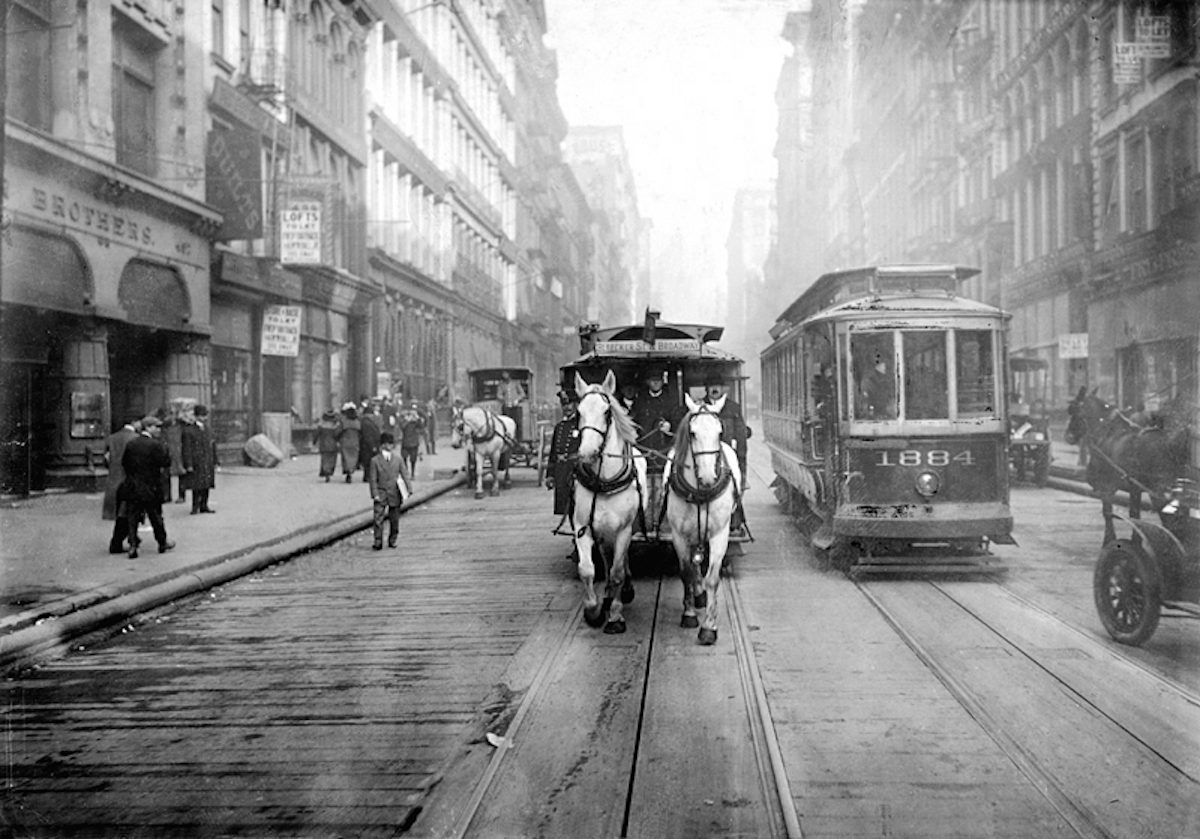The trolley car made its first New York appearance in 1832. The trolley car was a victim of the awesome power of automotive interests and the metamorphosis of American life. The history of the appearance of trolley cars in Queens is quite interesting. Learn more at queens-future.
For the first time in New York, an electric streetcar line was laid in Jamaica, Queens. The event occurred in the winter of 1887. Then the streetcar lines, such as Richmond Hill, Flushing-Ridgewood, Myrtle Avenue, Jamaica and Calvary Cemetery were laid through Queens. Trolley cars ran on the streetcar lines and carried more than 1 million people.
Horse-drawn wagons and electric carts in Queens

The Richmond Hill line carried 13,000 passengers a day in 1949. The Queensborough Bridge Line was the first private company that was engaged in trolley transportation. Its headquarters was in Queens.
However, the history of trolley cars is not exclusive to electric carts. Before electric cars became common, horse-drawn carts were widely used. These horse-drawn carts were smaller in size than their electric successors.
The transition from horse-drawn wagons to electric ones was quite difficult. The horse-drawn wagons were not only small but also difficult to maneuver. They could easily derail. The lack of mobility became an integral part of the development of trolley cars.
Electric carts were powered by electric wires attached to roofs. Brakes and doors were powered by air pressure. The wagons were perfectly symmetrical. They could be driven from the front or back, depending on which direction the vehicles were moving. It was difficult to steer a vehicle in the right direction, it could turn anywhere.
In addition, the wagons moved along the railway track and could not freely deviate from this railway track. Passengers had to be dropped off at stations. Since such carts could not turn, accidents were frequent. Transportation in such vehicles led to injuries and deaths.
The memories of the townspeople Vincent Branigan and Donald Steinmaker about the first trolley cars
He remembers the first trolley cars well and says that they had low mobility. The man recalls how he felt scared during the trip and a loud sound when the trolley car started to move.
Vincent said that at that time a trolley car was a good mode of transportation to move quickly. It had a large area for passengers, the fuel had no smell. Affable conductors worked on the route and treated the townspeople well. The drivers were also polite. They usually knew who would get off and at which trolleybus stop. Branigan remembers the clothes drivers wore. They wore dark blue pants, gray jackets, dark shirts and a tie.
The timetable of such vehicles was accurate. Drivers exactly followed the schedule. They drove at a moderate pace and obeyed the traffic rules.
Every wagon was designed for 90 people. New wagons were wider than their horse-drawn predecessors. A trip from Queens Plaza to Second Avenue took only 15 minutes by the Queensborough Bridge trolley car.
Another local resident, Donald Steinmaker, remembers all his trips well. He said his ordinary trip by trolley car started in Maspeth. Then he made a trolleybus transfer in Brooklyn and went to Long Island. The man paid for such a long trip for only 5 cents.
The men say that they regret getting rid of the trolley cars in Queens. It happened in 1960. Such a mode of transport was replaced by buses. The reason for the disappearance of trolley cars was a large number of accidents. Donald says that the trolley car was not just a mode of transport, a trolley car trip was a real adventure.


